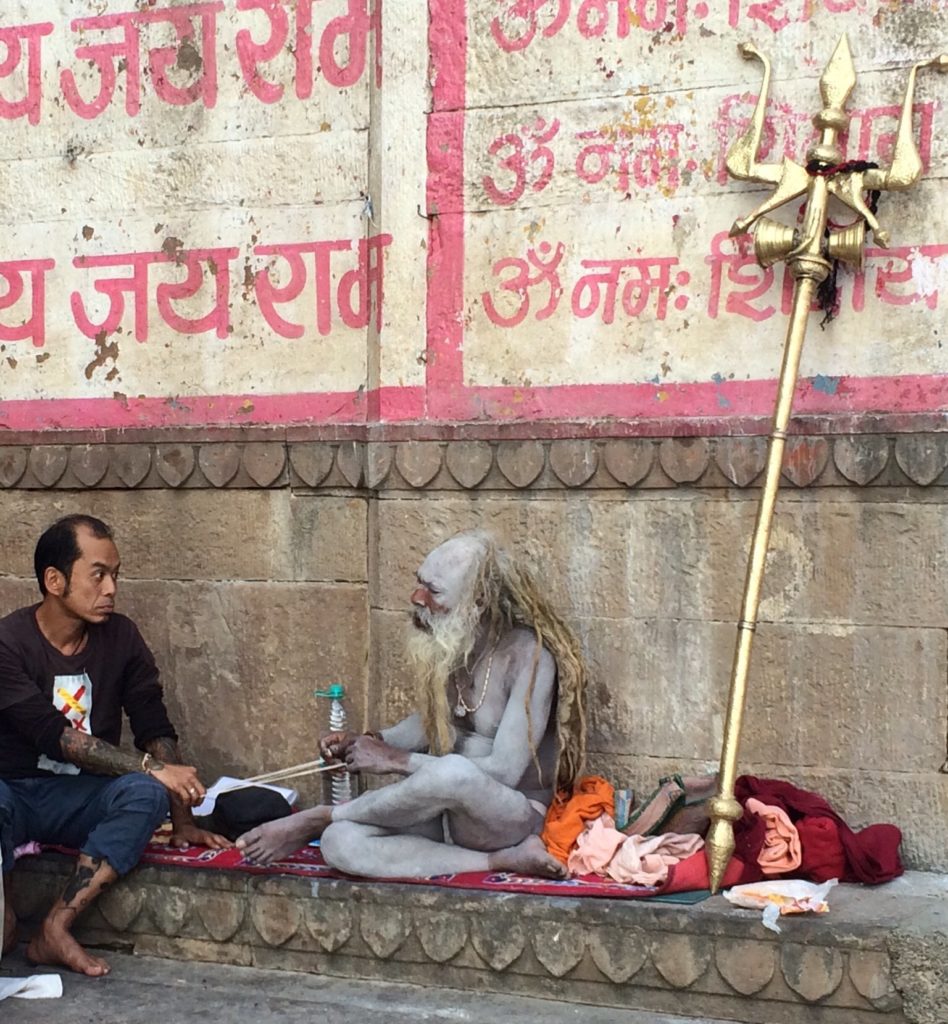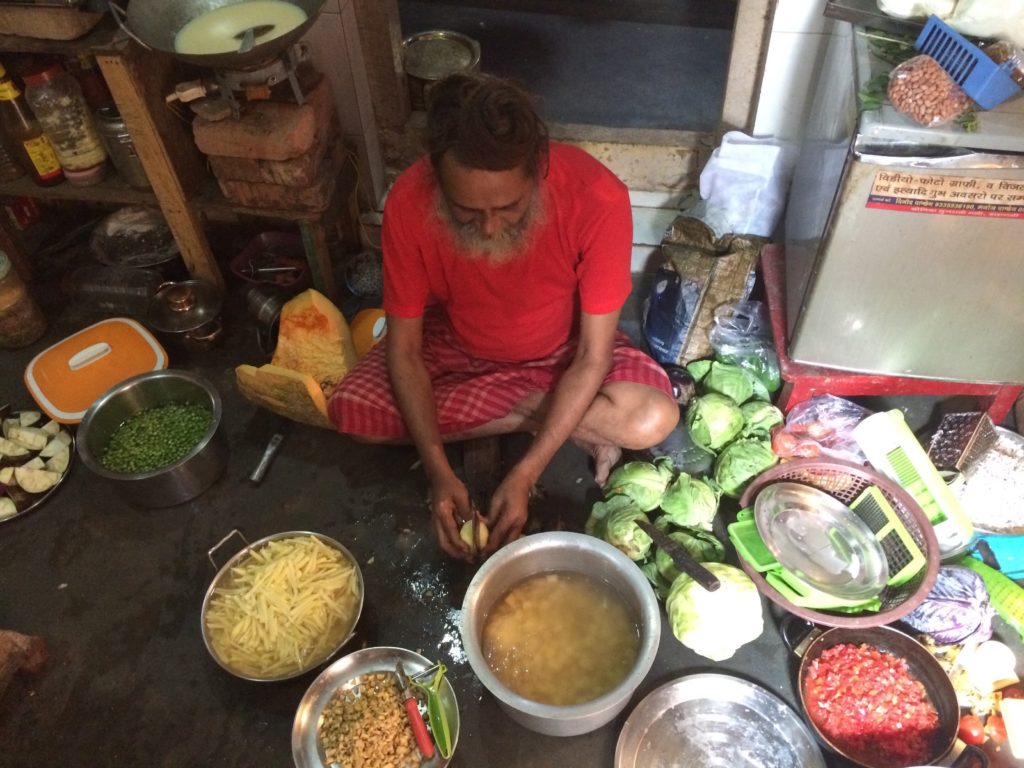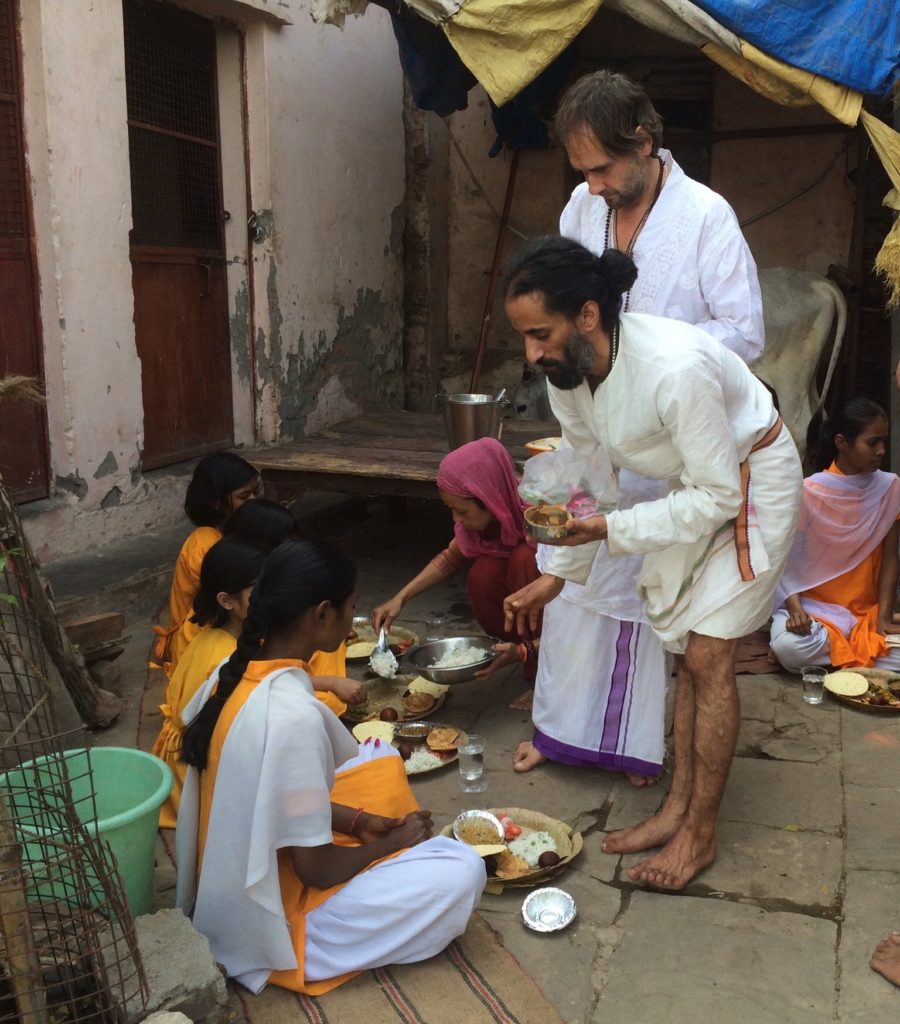Adventuring in Varanasi, India’s Spiritual Capital
October 13, 2018
February 2016:
Finally made my way up to North India, half way into the trip. (Warning: the descriptions below may make you queasy)

Views of the Ganga in Varanasi.
Varanasi is the birthplace of Shiva and origin of the Ganges river (“Ganga”), where Indian families flock to cremate their loved ones, once they have passed to the next life. It is a holy act to be cremated in the city of Varanasi and have your ashes released into the Ganga.
As part of the traditional ceremony, the oldest members of the family must shave their heads beside the Ganga in preparation for the poojah (they use a blade to shave their heads). The family wraps their loved one in white cloths and decorates the body with flowers. The body is carried to the Ganga as the family prays aloud in unison. The cremation commences along the Ganga and the ashes are placed in the river. As this is a holy ceremony, photos are prohibited; hence, no photos to share.
According to Hindu religion, babies and persons with lepracy cannot be cremated. Rather, they are placed in the river with stones tied to their arms and legs, in order to hold their bodies at the bottom of the river. While taking the canoe across the river, we came across limbs (i.e., arms, legs) emerging from the water, which made me rather queasy and uneasy.

Sunset canoe trips across the Ganges river.
Filled with the ashes of the deceased and home to the Shiva god, Indians perform a daily ritual of dipping in the river from head to toe 3x each morning, and often sip the water (seems rather unsanitary) and do their laundry in this river as well.

Dipping and doing laundry on the banks of the Ganges river.
According to Hindu tradition, only the lowest caste, the Untouchables caste, are allowed to touch the dead. The wood used for cremations can only be handled by the Untouchables, as it touched the body of a dead person.

A naga sadhu (a ‘good man’) covered in the human ashes from the cremations in Varanasi.
With the riverside consumed with death, shaved hair in piles on the stone ground, and Indians mourning over their loved ones, witnessing these ceremonies was heart-wrenching. As Jewish funerals do not feature open caskets, I had never seen a dead body before. Needless to say, this was a challenging emotional hump to climb over.
My insights on Indian lifestyle:
The spiritually-focused, community-based culture of India astounds me. I’m not accustomed to this lifestyle, considering the individualistic, secular, and achievement-oriented society I live in. Whereas Indians dedicate time to pray and connect spiritually at their personal shrines or communal temples each day, the West features long work Whereas Indian children run from home-to-home among the open doors in their communities, the West features gated and hidden homes with bolted doors. Indians make prayers at their communal temples and personal shrines multiple times in the day.

Stumbling upon a daily communal poojah. The spiritual dedication in the whole of India floors me.
In an email to my family I shared further highlights from the adventure through Varanasi:
– “I went to the central part of Varanasi to hang out with a local Indian student I met by the Ganga. I soon came to realize he was absolutely kookoo, and I literally had to escape and had to block his number on my phone.
– I then stayed at the Lali Baba Ashram for a night with the Lili Baba, a ‘Naga sadhu’ (a ‘good man’ who walks around naked besides for a small cloth) and an ‘agora’ (persons who put human ashes all over the bodies). He is a kind and generous Baba, who stays very connected on social media! On top of that, he is an excellent chef.
I stayed with Lali Baba at his ashram for one night. Feel free to check out his Facebook!

Lali Baba himself!
– For the 1 year anniversary of the death of a Hindu woman, I helped with performing the good karma act at Lali Baba’s ashram. We cooked massive amounts of food for 25 persons (young orphan girls, priests, and other guests), cutting up veggies on the floor of Lali baba’s small kitchen and cooking in massive pots.”

Lali Baba cooking with us on the floors of Lali Baba Ashram. Such a delicious cook!

Serving the meal we cooked to the orphan children at the Lali Baba Ashram.
Stay tuned for the next post where I follow the Hindu pilgrimage to Allahabad to dip in the Sangam river!
Sending love your way,
Ariel
BE THE FIRST TO COMMENT